70以上 low latency mode nvidia settings 111432-Low latency mode nvidia settings
Navigate to the "Low Latency Mode" section, and click the setting box to the right This opens up three options Off, On, and Ultra If you choose "Off", the game's engine will queue one to three frames at a time When this parameter is Here is the proper method to setup NVIDIA NULL correctly for GSYNC monitors Download and install GeForce Game Ready driver or newer Open the NVIDIA Control Panel, and click on Manage 3D settings Scroll down the Global Settings tab to Low Latency Mode Scroll down to Vertical Sync and select On Low Latency Mode, however, can only act via the NVIDIA driver, while NVIDIA Reflex has been integrated directly into the games and thus works more smoothly When using the Low Latency Mode, stuttering can occur, whereas NVIDIA Reflex, in my experience, doesn't due to the better integration, and you can therefore activate NVIDIA Reflex without

How To Turn On Nvidia Low Latency Mode In Windows 10 Auslogics Blog
Low latency mode nvidia settings
Low latency mode nvidia settings- Khi đã đáp ứng đủ điều kiện, mở NVIDIA Control Panel bằng cách click chuột phải vào desktop Windows và chọn NVIDIA Control Panel Click vào Manage 3D Settings trong 3D Settings ở thanh bên trái Chọn cách muốn bật chế độ UltraLow Latency Mode NVIDIA Reflex Low Latency is accessed and used directly from the game engine Thus, the function is integrated into the respective game In contrast, the Low Latency Mode targets the latency between the graphics card and the graphics card driver and does not directly contact the executed game
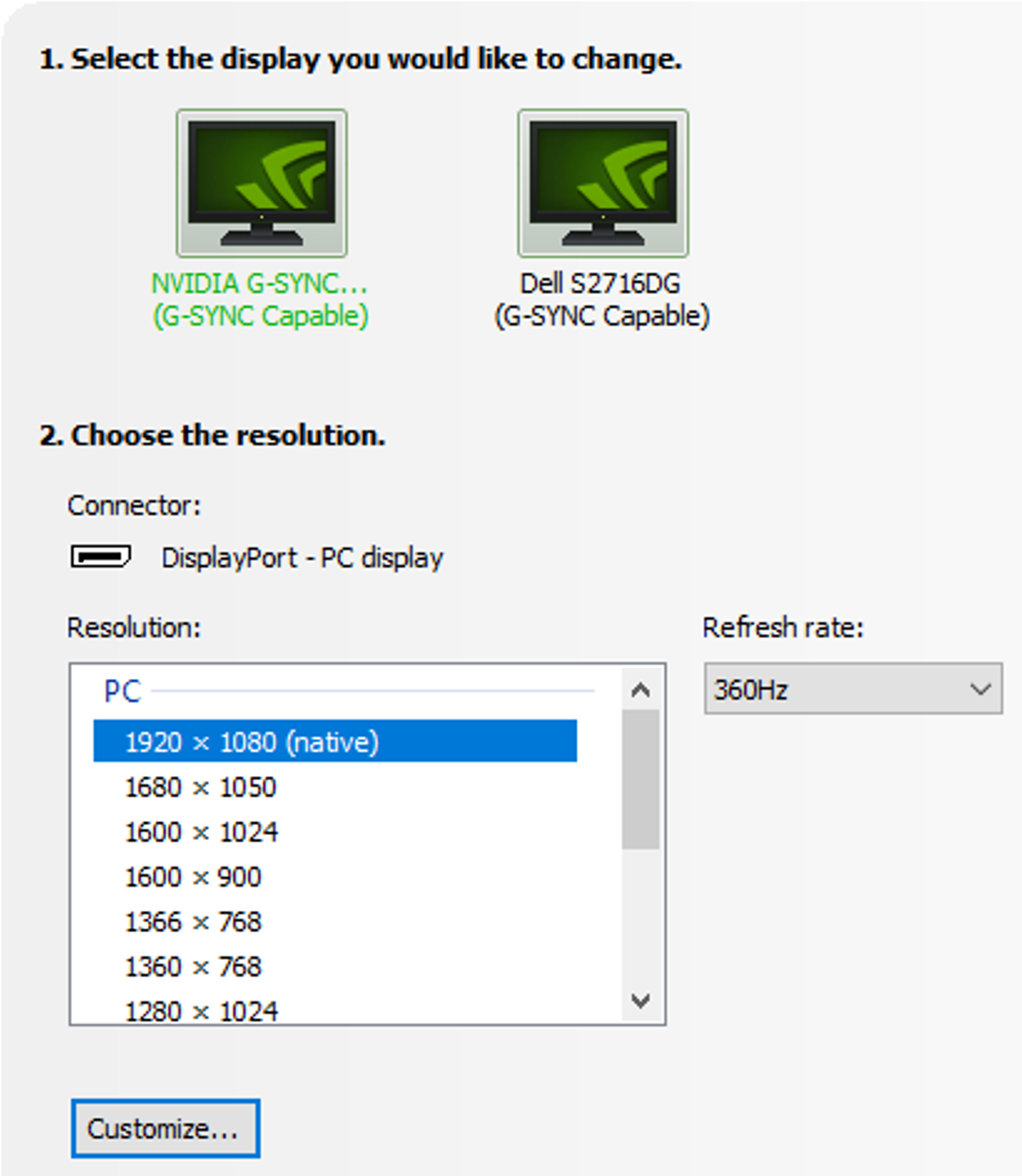



How To Reduce Lag A Guide To Better System Latency Geforce News Nvidia
Also, if you have input latency in games, mouse lag, that's often simply a result of low frames per second (FPS) and this setting won't solve that problem Enable NVIDIA Low Latency Mode To enable NIVIDIA low latency mode on Windows 10, do the following You'll need the latest NVIDIA graphics driver to take advantage of this feature To get lower input latency in "Low Latency Mode = Ultra" we need to limit ingame FPS below 138 (in the case of a 144 Hz monitor) But If there is no ingame limiter Does it make sense to limit FPS using the nvidia control panel (as we know it increase input lag)? Locate "Low Latency Mode" in the list of settings Click the setting box to the right of the setting and select "Ultra" in the list With the default settings of "Off," the game's engine will queue one to three frames at a time
Ultra Low Latency Mode If a game doesn't support the Reflex SDK, you can still get partial latency improvements by enabling NVIDIA Ultra Low Latency mode from the NVIDIA Control Panel Simply open the control panel and navigate to Manage 3D Settings, then Low Latency Mode, and select the Ultra option Nvidia low latency mode just uses the "before it happens" technique that renders the frames before the GPU needs them So it saves time It uses the maximum prerendered frame options in the backend to render the frames before they need to displayI've been trying out low latency modes for games Including Nvidia Low Latency, setting FPS limits and sound to 'immediate mode' To me these are quite new things and far less well established in 'proof' than things like a fast , shutting down dumb services of no use at all to anybody, router chip & network, packet priority & cache chopping
This problem usually appears when users open the NVIDIA Control Panel but are unable to apply changes they have made within the program It mostly occurs when trying to change things in the Manage 3D Settings section Also, it's highly present when trying to set the default graphics processor for a game on your computerWill this decrease the input lag or, on the contrary, increase it?Check our growing list of supported games to see if you can take advantage of NVIDIA Reflex Turn on Ultra Low Latency Mode If NVIDIA Reflex is not available, your next best option is to turn on the Ultra Low Latency mode in the NVIDIA graphics driver This setting also reduces




How To Reduce Lag A Guide To Better System Latency Geforce News Nvidia
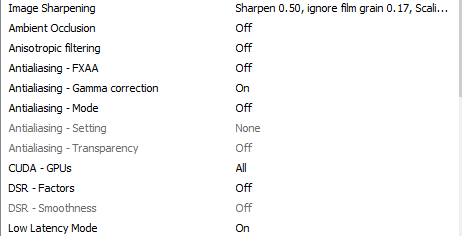



Nvidia Low Latency Mode Technical Discussion Mouse Sensitivity Community
Crysis 3 may not like/be aware of the JustInTime behaviour of the driver's low latency mode "ultra" setting Games always assumed it was at least 1 frame being prepared by the CPU before the GPU started painting it This setting is still a 'Beta' setting and probably for this very reason which it may or may not mature in the futureNVidia just relabeled the ages old Maximum PreRendered Frames Feature Of course, Setting it to Zero (Ultra) will kill your fps and introduce stutter That is why the drivers default was set to 3 for many years, to get the bigger fps results compared to amd Good settings are 1 (on) in competitive shooters, and 2 (now off) in everything elseLow Latency Mode Low Latency Mode is a fantastic Nvidia Control Panel Setting that reduces the input lag by 33 percent For those of you who don't know what the input lag is, it's just the amount of time it takes to process the device keypress
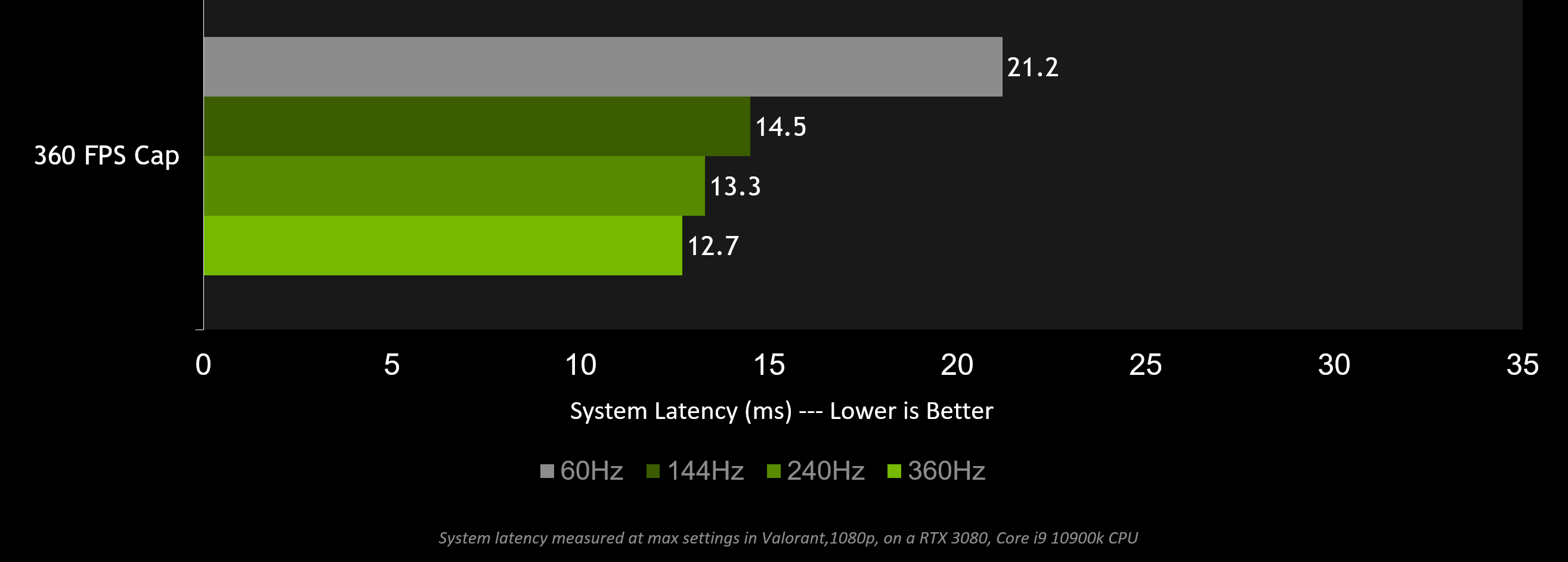



How To Reduce Lag A Guide To Better System Latency Geforce News Nvidia




Fs Nvidia Best Graphic Settings Microsoft Fs Surclaro
maybe a suggestion on what to put the low latency mode settings to for each scenario would also be greatly appreciated id love to understand this more and get the lowest latency i can depending on the scenario using low latency mode in nvcp cpu bound/ gpu bound cpu bound/gpu not bound cpu not bound/gpu bound cpu not bound/gpu not bound The NVIDIA Reflex Low Latency mode supports GPUs all the back to the GTX 900 series! The NVIDIA Control Panel comes with many important settings such as Antialiasing, Anisotropic filtering, NVIDIA Low Latency Mode, and many more These settings help improve the gaming experience when playing the game So, some gamers want to know how to optimize NVIDIA Control Panel settings to improve the game experience



Low Latency Mode Or Nvidia Reflex Low Latency Mode R Valorant




Nvidia Reflex Tested With Ldat V2 Making You A Better Gamer Nvidia Reflex Low Latency Mode Benchmarks Techpowerup
Low Latency Mode ensures that the frames in your game are submitted into the render queue just when the graphics card requires them In a recent video of Battle(non)sense about "NVIDIA Reflex", I noticed that it recommends setting the low latency mode to "Off" Why not "On"? NVIDIA Reflex Low Latency is accessed and used directly from the game engine Thus, the function is integrated into the respective game In contrast, the Low Latency Mode targets the latency between the graphics card and the graphics card driver and does not directly contact the executed game




Best Nvidia Settings For Performance W Nvidia Low Latency Mode Youtube
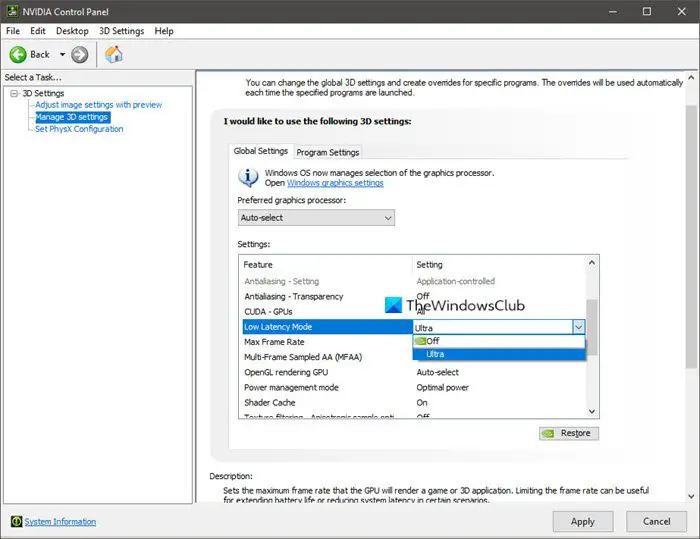



How To Enable Nvidia Low Latency Mode On Windows 10
Di jendela NVIDIA Control Panel yang muncul, pilih Manage 3D settings (1), pastikan Anda berada di tab Global Settings (2), klik Low Latency Mode (3), klik kotak dropdown dari Low Latency Mode (4) dan dari opsi yang ditampilkan, pilih Ultra (5)NVIDIA Reflex delivers the ultimate competitive advantage in VALORANT This revolutionary suite of GPU, GSYNC display, and software technologies that measur NVIDIA's graphics drivers now allow an "UltraLow Latency mode" meant for competitive gamers and anyone else who needs the fastest input response times in their games
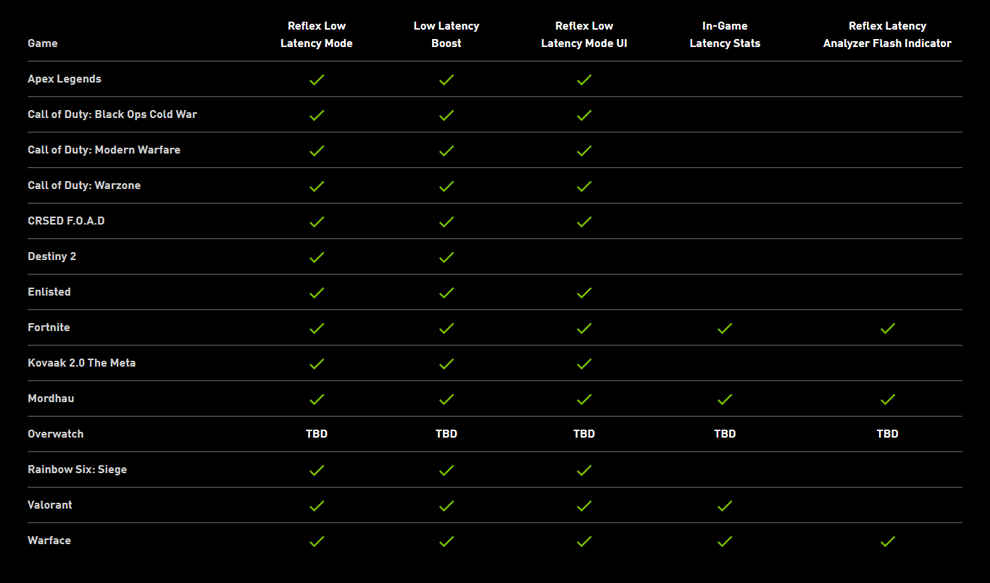



How To Setup Nvidia Reflex Digit
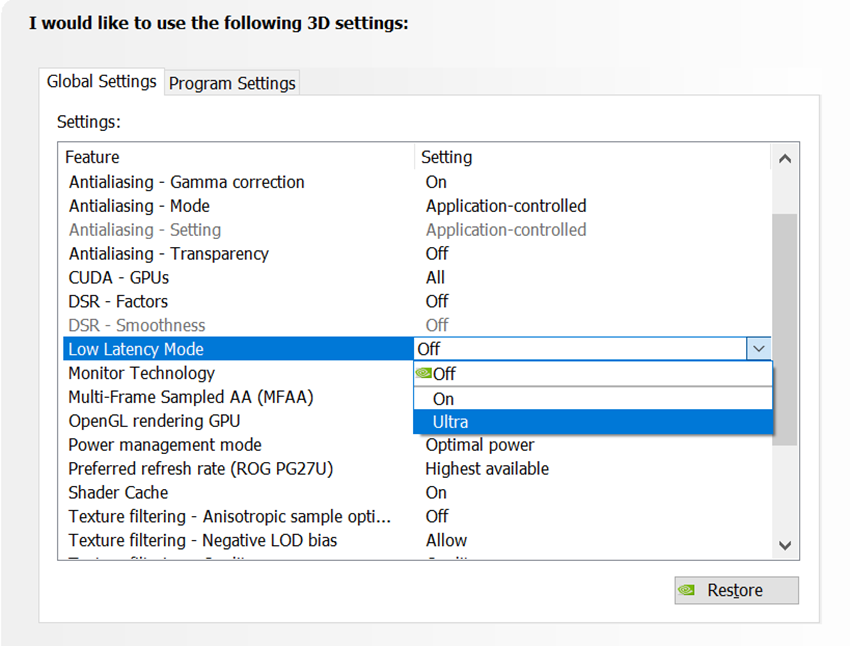



Gamescom Game Ready Driver Improves Performance By Up To 23 And Brings New Ultra Low Latency Integer Scaling And Image Sharpening Features Geforce News Nvidia
I found that the best and smoothest setting I found was with Gsync Off Vsync On Ultra Low Latency On (Ultra appeared smoother in Dead Space but created afterimages in DMC4 SE) Ultra Low latency with Gsync resulted in either the stutter issues, response slowing or afterimages, especially when testing 240hz in motionHow to get into the Nvidia control panel and turn it on only with Nvidia driversRightclick on your desktop Nvidia Control Panel Make sure you have "Man If you want to enjoy the max capabilities of your Nvidia video card with Microsoft Flight Simulator use the following settings guideline Open Nvidia Control Panel, go to 3D Settings > Manage 3D Settings, select Program Settings tab and from the list select Microsoft Flight Simulator Off CUDA GPUs – All Low Latency Mode – Ultra Max




How To Enable Nvidia And Amd Anti Lag To Reduce Lag In Gaming Make Tech Easier




How To Enable Ultra Low Latency Mode For Nvidia Graphics
I heard that If you turn low latency mod to Ultra it will decrease your fps I have 16gb of ram, m2 SSD, 1660S, Ryzen 5 3400G pro with vega graphics It is best to leave it on "on" as a global setting You only benefit from ultra if the games you are playing reach 95% gpu usageNvidia Control Pannel > Manage 3D Settings > programs > eftexe > Low Latency Mode > UltraTurn on Nvidia's lowlatency mode If you have certain Nvidia graphics cards, Valorant can take advantage of the card's builtin ultralow latency mode, which is a fancy way of saying "more frames, less input lag, please" Since the setting is built into Valorant, start in
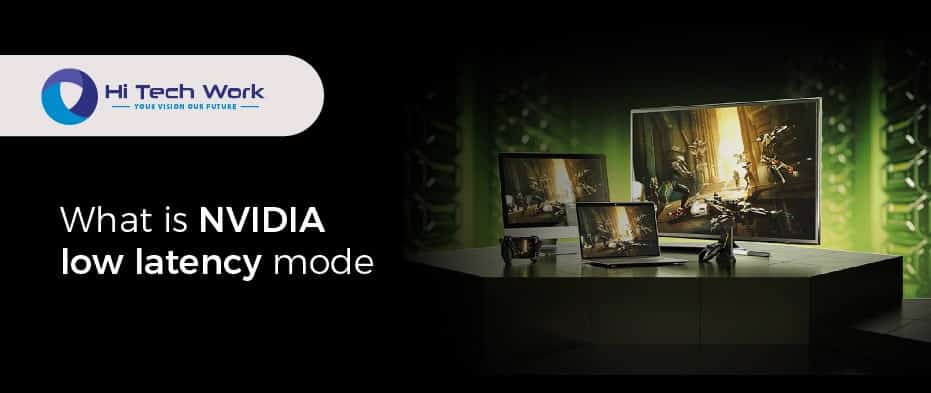



What Is Nvidia Low Latency Mode How To Enable It




Nvidia Reflex Lowers Input Lag In Valorant How To Turn It On Talkesport
In a recent video of Battle(non)sense about "NVIDIA Reflex", I noticed that it recommends setting the low latency mode to "Off" a5hun also had a FrameRate limiter video where Any option but Off in nongpu boudn scenarios would increase latencyBest NVIDIA Settings for Performance WITH NVIDIA Low Latency Mode NVIDIA just released latest drivers with Low Latency Mode option, which allows low input What are the best settings for competitive gameplay nvidia control panel low latency mode ultra vsync on gsync on power maximum power (does this actually do anything) ingame vsync off fps cap to 3 fps below monitor if




How To Reduce Lag A Guide To Better System Latency Geforce News Nvidia




Nvidia Low Latency Mode On Or Off For Less Input Lag Blur Busters Forums
If I am correctly aware, then the "On" value forces the maximum number of prepared frames to 1, which will give us confidence that the game will not prepare more than 1 frameIs it worth using in CSGO?Contact Me Twitter Ramla777 Email Metaworldstudio@gmailcom1 Rightclick on the desktop of your computer and then choose NVIDIA Control Panel 2 In the popup window, click Manage 3D settings from the left panel to continue 3 Then you need to decide how to enable NVIDIA low latency mode If you want to enable it
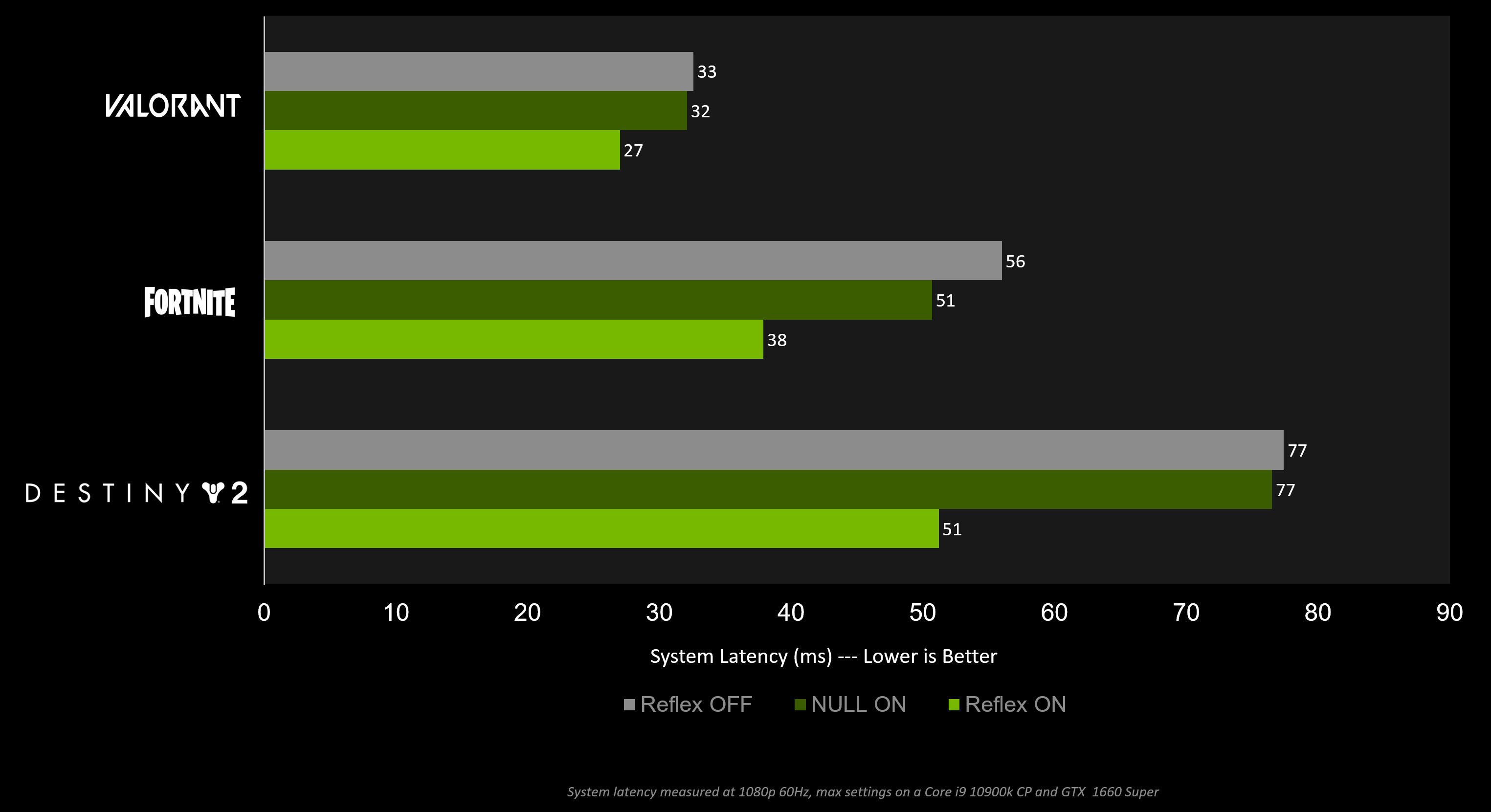



How To Reduce Lag A Guide To Better System Latency Geforce News Nvidia




How To Reduce Lag A Guide To Better System Latency Geforce News Nvidia
Check for the latest drivers for your graphics card Open NVIDIA Control Panel Go to 'Manage 3D settings' Turn 'Low Latency Mode' on (If you don't see this option, then verify if your graphics card is supported or update your drivers) Start Valorant GoIn nvidia panel low latency mode should be set to off, and in game nvidia reflex should be set to on or onboost (reflex overrides low latency mode, so there's no point in having both on) My current numbers are Game to render 2ms Game latency 2527ms Render latency ~02msLevel 1 TerriersAreAdorable 1y RTX 3090 FE Meshify C Mini Setting it to Ultra will lower latency even more at the expense of lower FPS You should try it and make a decision based on how it "feels" for your play 0 level 2 SBMSAMan108



Low Latency Mode Nvidia R Globaloffensive




Nvidia S New Control Panel Fps Limiter Vs Rivatuner Vs In Engine Guru3d Forums
Just an FYI, NVidia's Low Latency Mode is the same thing as AMD's AntiLag option Both reduce the number of prerendered frames on the CPU before that information gets sent to the GPU It's basically just a fancy name for the (now removed) maximum prerendered frames option that used to be in the driver How to Enable NVIDIA Low Latency Mode?




Best Nvidia Settings For Low Latency Fps Boost Lower Input Lag Apex Legends Optimisation Guide Youtube




How To Enable Ultra Low Latency Mode For Nvidia Graphics Appuals Com
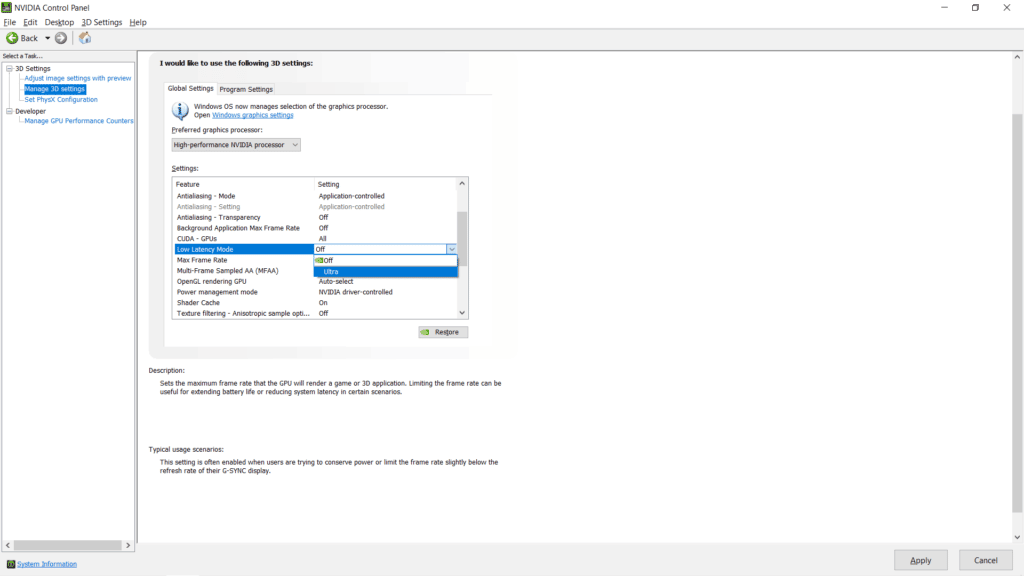



Saints Row The Third Remastered Nvidia Audio And Fps Fix Whatifgaming
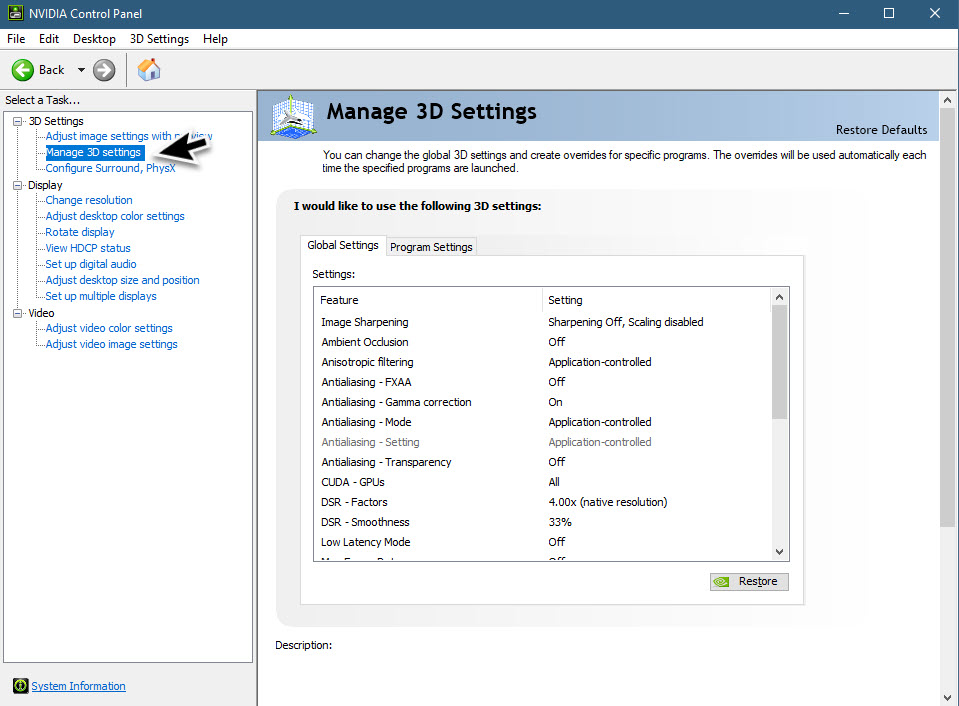



How To Set Framerate Limit In Nvidia Control Panel
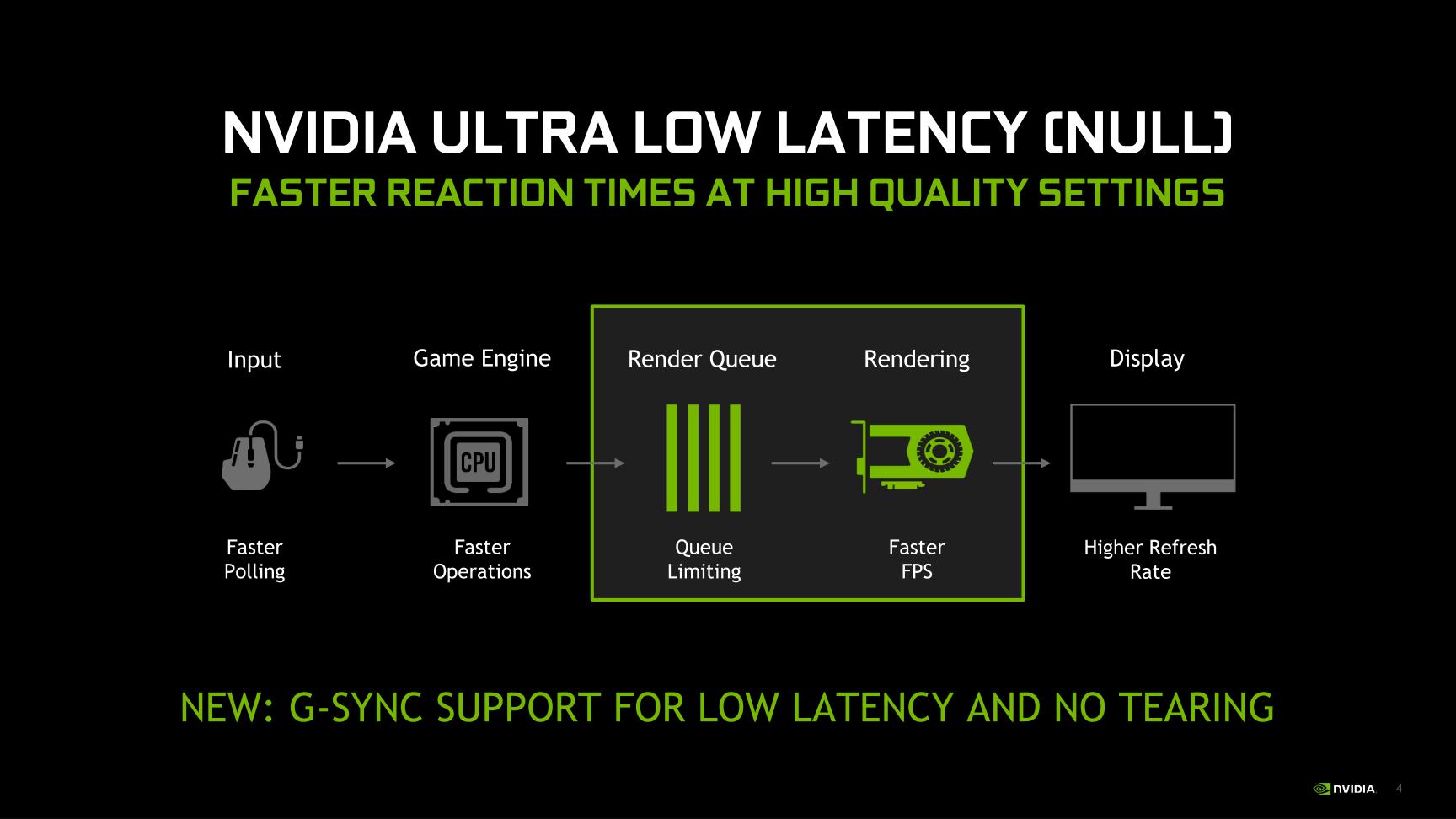



Nvidia Driver Feature Updates The Test The Nvidia Geforce Gtx 1660 Super Review Feat Evga Sc Ultra Recalibrating The Mainstream Market
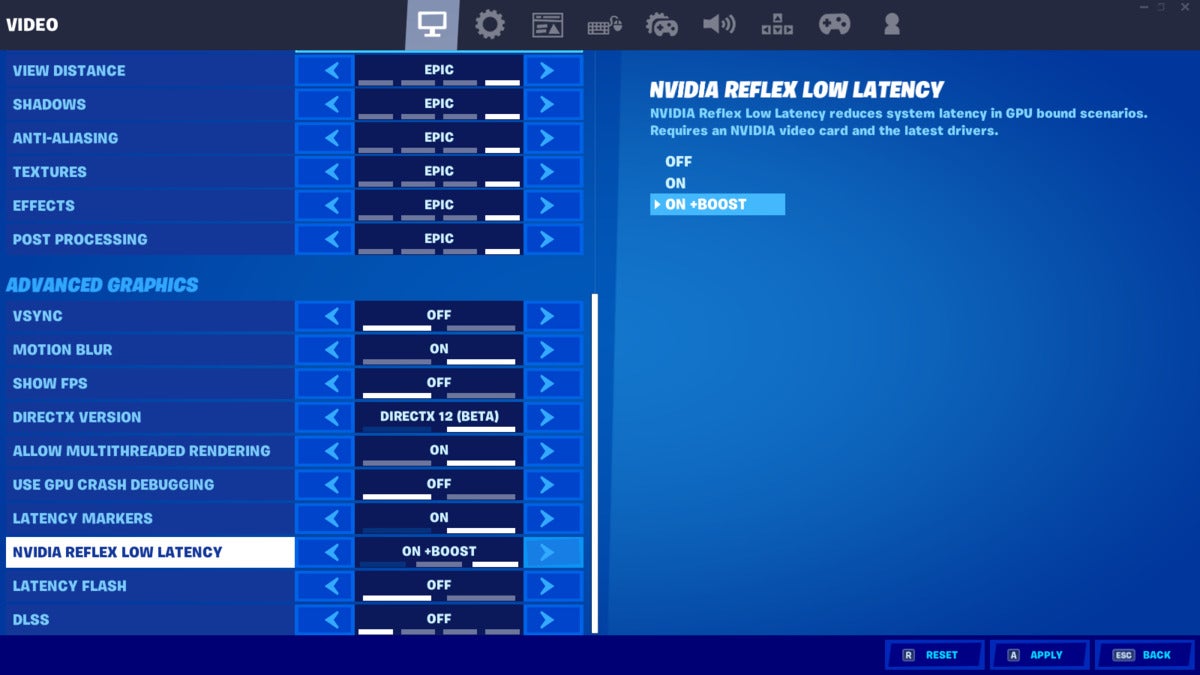



Nvidia Reflex Tested How It Makes You A Better Esports Gamer Pcworld




How To Enable Nvidia Low Latency Mode Setting In 19 Youtube
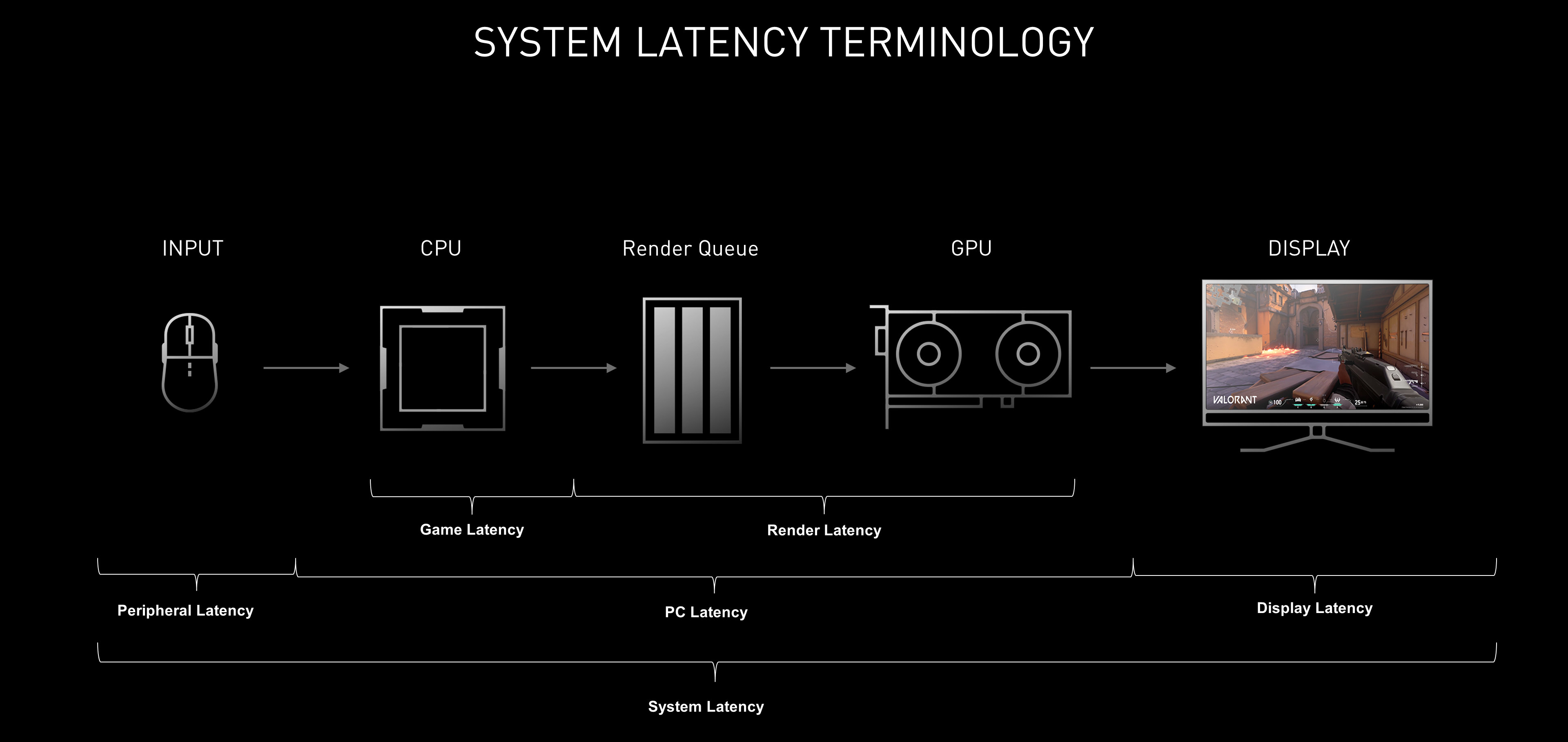



How To Reduce Lag A Guide To Better System Latency Geforce News Nvidia
/cdn.vox-cdn.com/uploads/chorus_image/image/65049653/nstatt_190612_3506_0126.0.jpg)



Nvidia Releases Big Driver Update With Ultra Low Latency Mode Integer Scaling And More The Verge
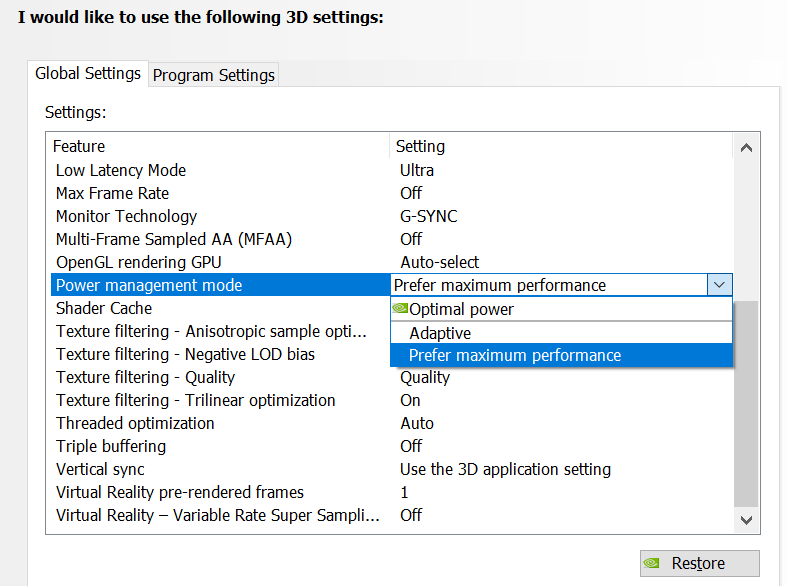



Introducing Nvidia Reflex Optimize And Measure Latency In Competitive Games Geforce News Nvidia



1




Nvidia Fix Stuttering Lag Best Settings For Your Geforce Control Panel Steemit




What The Heck Is Nvidia Reflex And Why Is It Useful
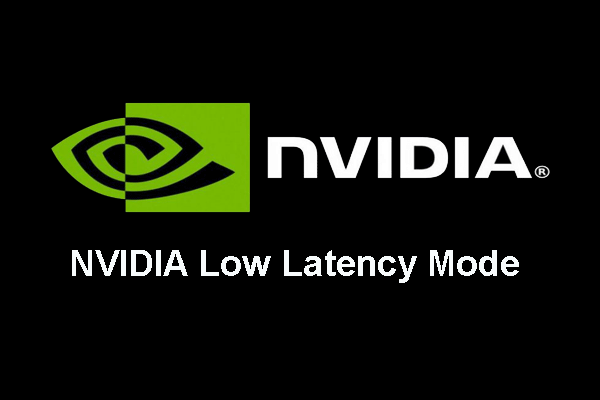



What Is Nvidia Low Latency Mode And How To Enable It




How To Enable Ultra Low Latency Mode For Nvidia Graphics




Nvidia Geforce Driver Power Mode Settings Compared
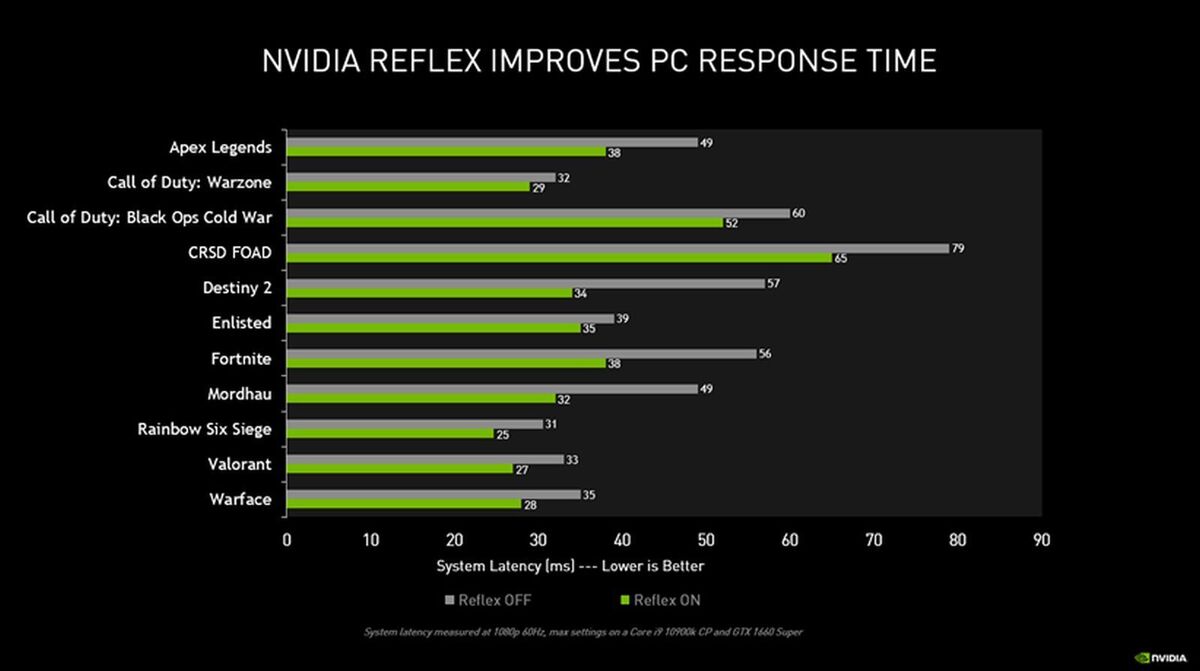



Nvidia Reflex Tested How It Makes You A Better Esports Gamer Pcworld




Nvidia Reflex Guide How To Reduce System Latency Tech Arp
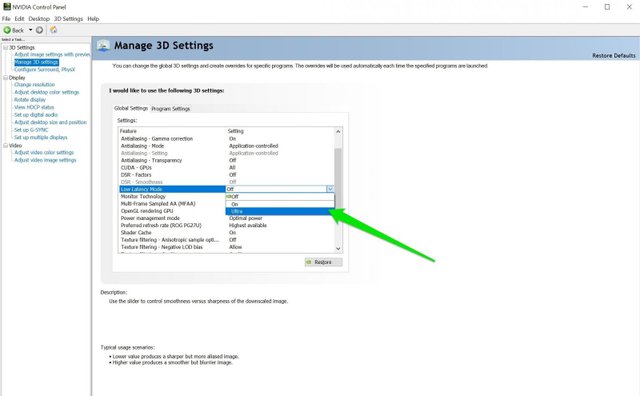



How To Enable Nvidia Low Latency Mode Mobygeek Com



Enable Ultra Low Latency Mode For Nvidia Graphics Windows Bulletin Tutorials




How To Set Up Nvidia G Sync For Smooth Tear Free Pc Gaming Pcmag
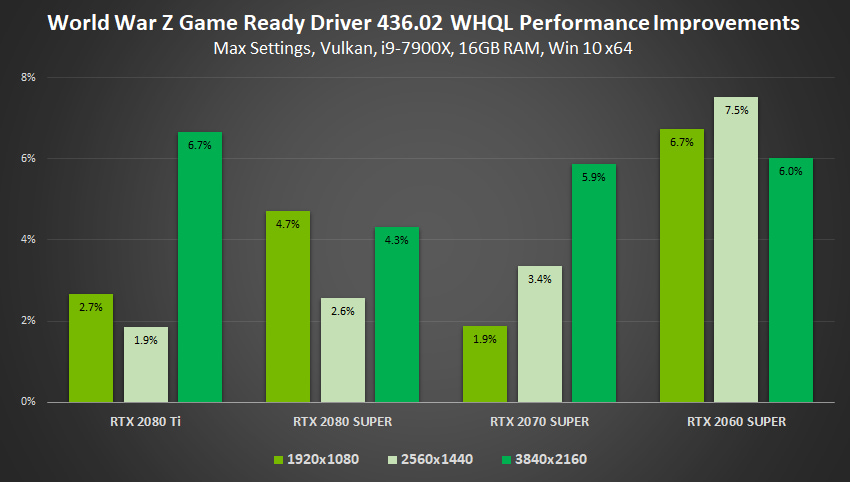



Nvidia Geforce Gamescom Driver Boosts Performance Adds Low Latency Mode Slashgear



Latest Nvidia Graphios Driver Low Latency Option Frontier Forums




Settings For Nvidia Users To Help With Fps Smoothness
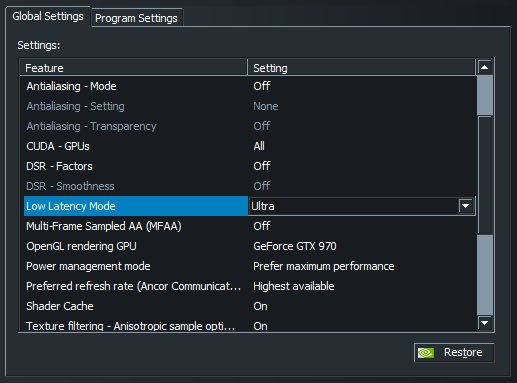



Wizkay 1 Go To Gforce 2 Install New Driver Update 3 Open Up Nvidia 4 Go To Manage 3d Settings 5 Under Global Settings Turn Low Latency Mode To Ultra




How To Enable Ultra Low Latency Mode For Nvidia Graphics




How To Turn On Nvidia Low Latency Mode In Windows 10 Auslogics Blog




Nvidia Reflex Tested With Ldat V2 Making You A Better Gamer Nvidia Reflex Low Latency Mode Benchmarks Techpowerup
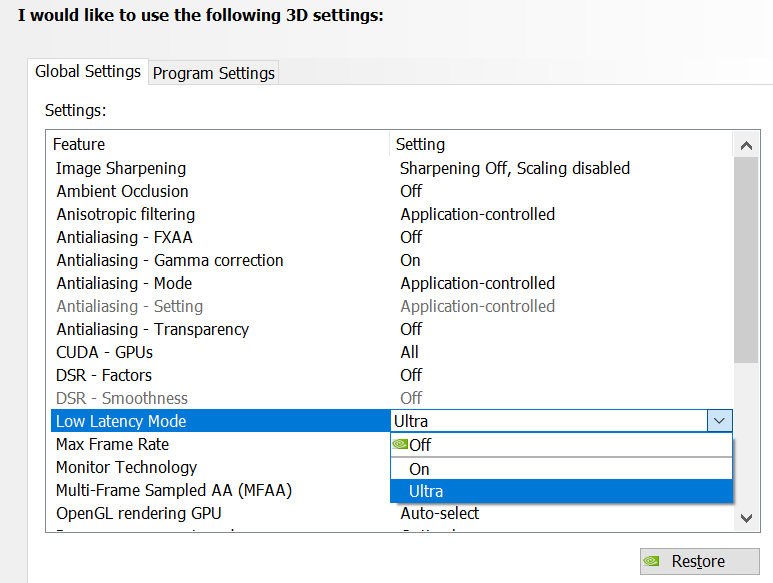



How To Reduce Lag A Guide To Better System Latency Geforce News Nvidia




How To Enable Ultra Low Latency Mode In Nvidia Settings New Nvidia Driver Feature Update Youtube




Nvidia Gamescom Driver Adds Ultra Low Latency Mode Integer Scaling And More Eurogamer Net
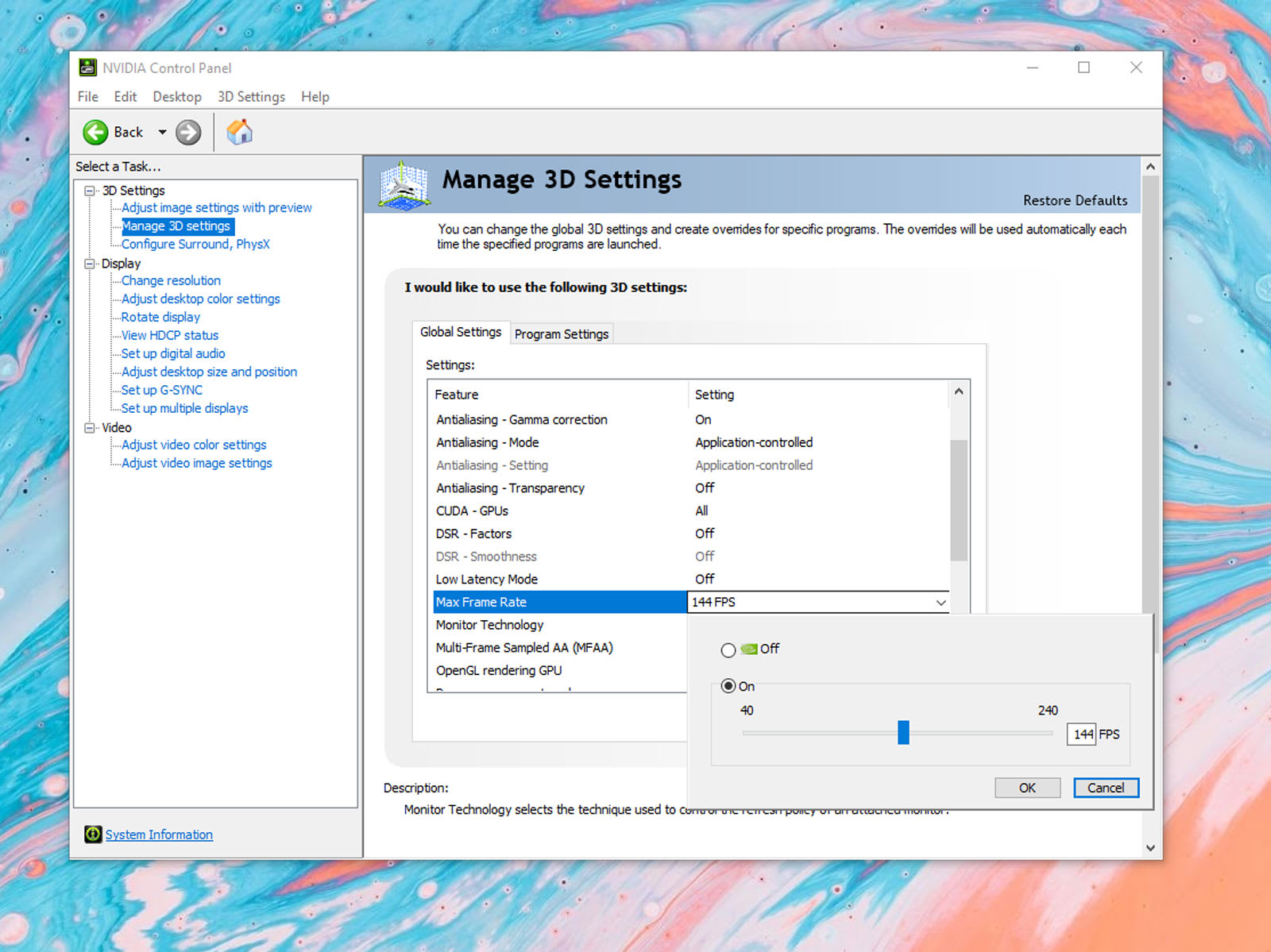



Nvidia S New Geforce Drivers Include A Framerate Cap To Reduce Latency Engadget
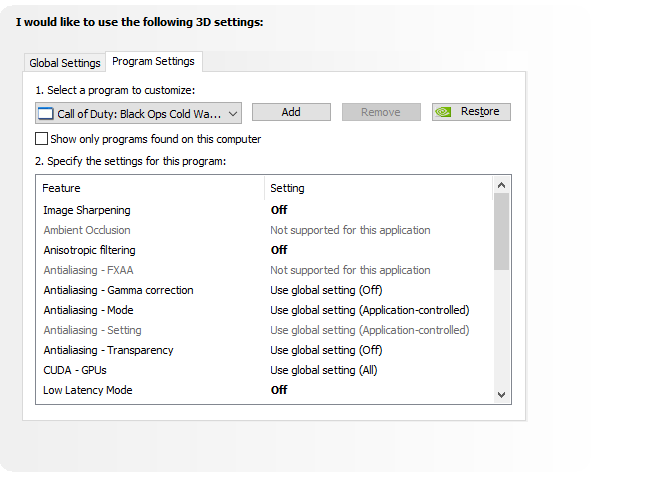



Best Nvidia Call Of Duty Cold War Settings For High Fps And Low Input Lag The Vr Soldier




The Complete List Of Nvidia Settings For High Csgo Fps In 21 Win Gg




What Is The Nvidia Power Management Mode Tekpip




Nvidia Driver 442 19 Release Notes Urbandork




Boost Your Csgo Fps With These Nvidia Control Panel Settings Win Gg
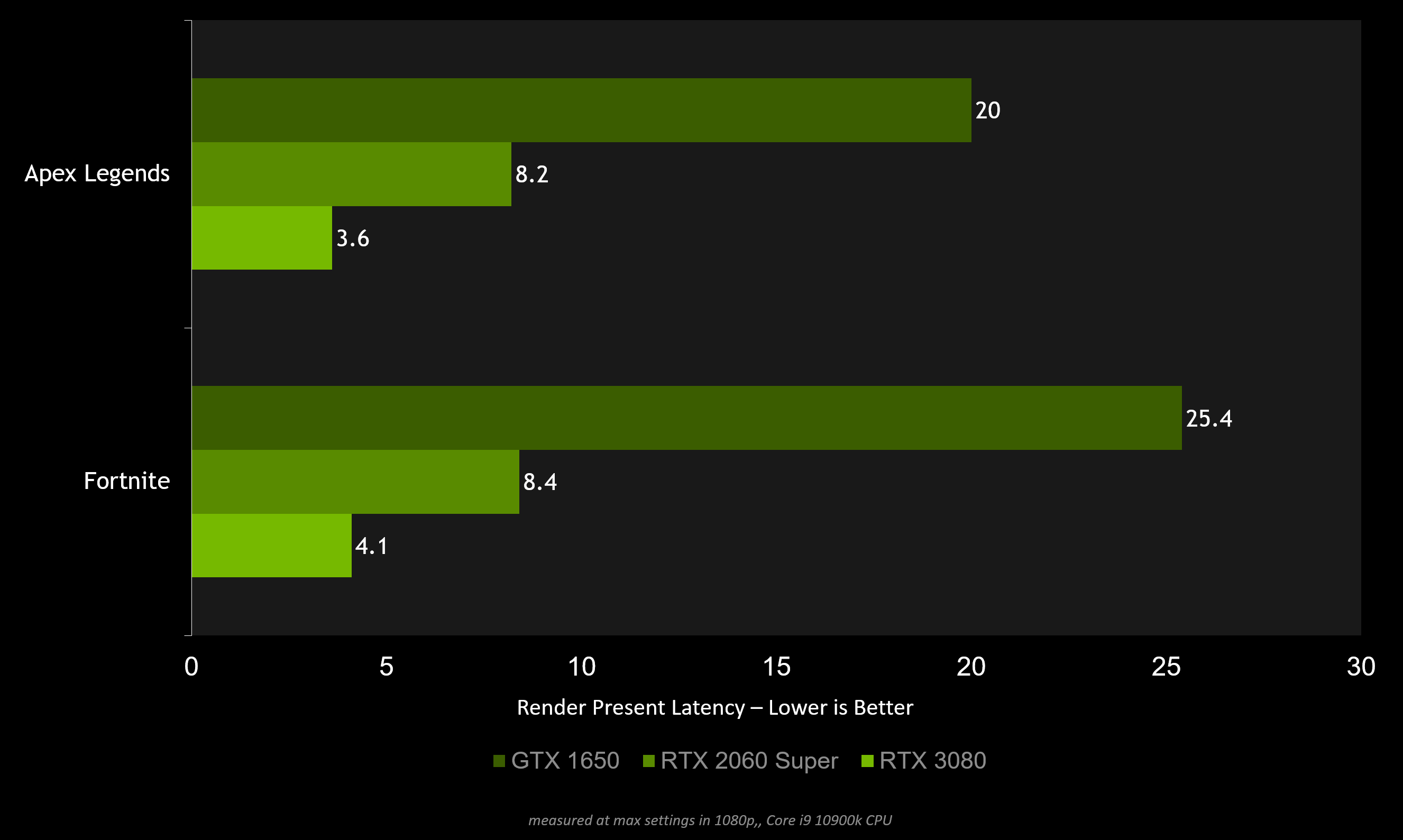



How To Reduce Lag A Guide To Better System Latency Geforce News Nvidia




How Dose The Low Latency Mode Work Ringofelysium




Nvidia S Gamescom Driver Comes With Integer Scaling Extra Speed Graphics News Hexus Net
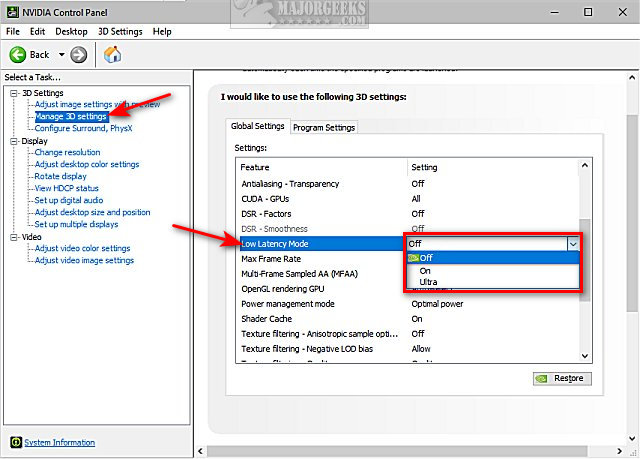



How To Enable Nvidia Ultra Low Latency Mode Majorgeeks




Setup Low Latency Mode On Your Gpu Youtube
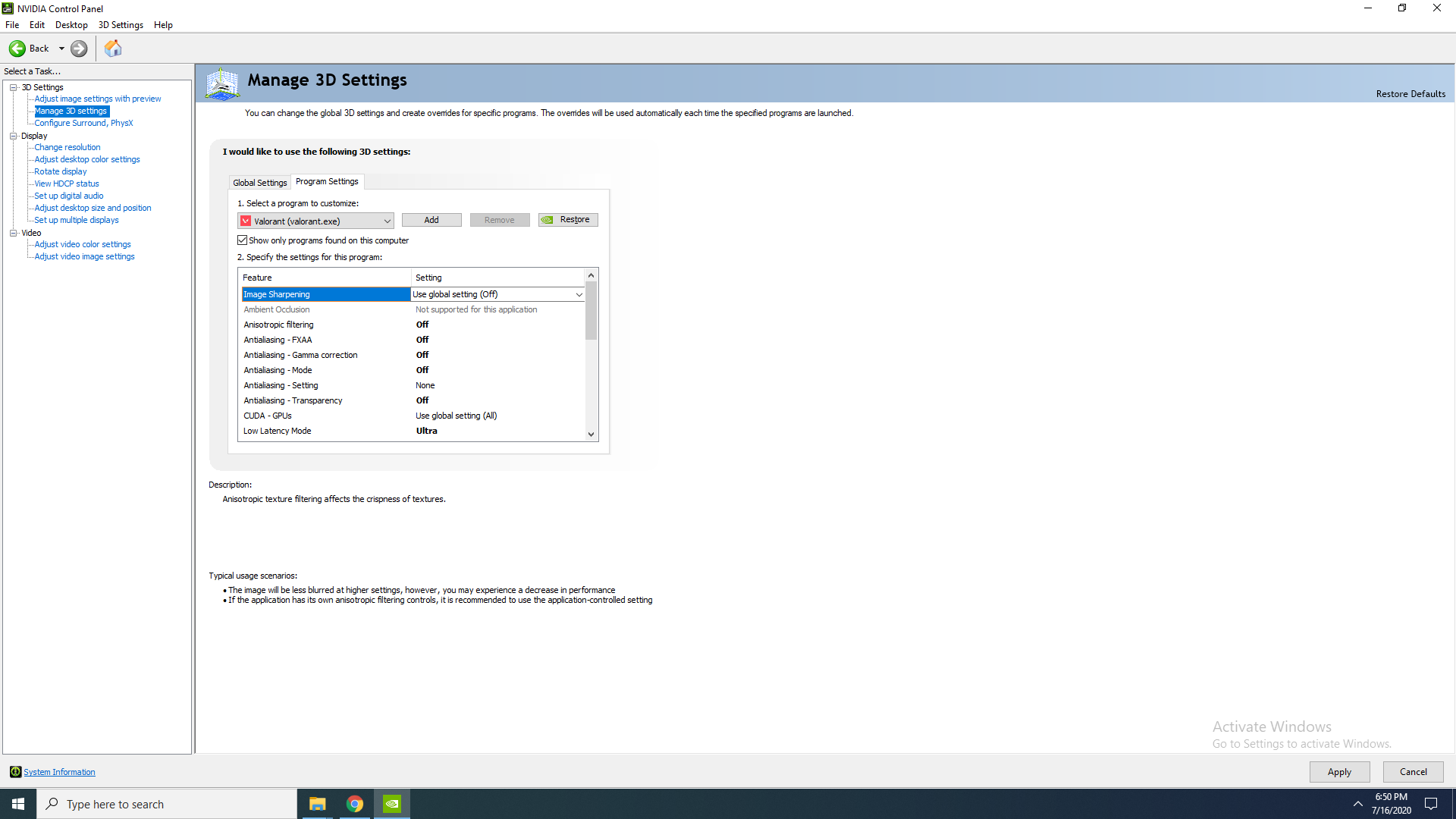



Best Valorant Settings For High Fps And Ultimate Performance



Best




7 Quick Nvidia Control Panel Setting To Boost Your Performance




The Complete Nvidia Guide To Getting Better Fps In Valorant Win Gg



Nvidia Low Latency Mode Ultra R Escapefromtarkov




How To Activate Nvidia Reflex In Call Of Duty Warzone




There S A New Nvidia Driver That Reduces Input Lag Its In The Nvidia Control Panel Called Low Latency Turn It To Ultra Makes The Game Feel More Responsive Will Probably Be The




Nvidia Geforce 436 02 Whql Graphics Drivers Released Gpu Integer Scaling Ultra Low Latency New Opengl Extensions And Vulkan 1 1 109 Geeks3d




How To Enable Image Sharpening In The Nvidia Control Panel Nvidia




How To Reduce Lag A Guide To Better System Latency Geforce News Nvidia
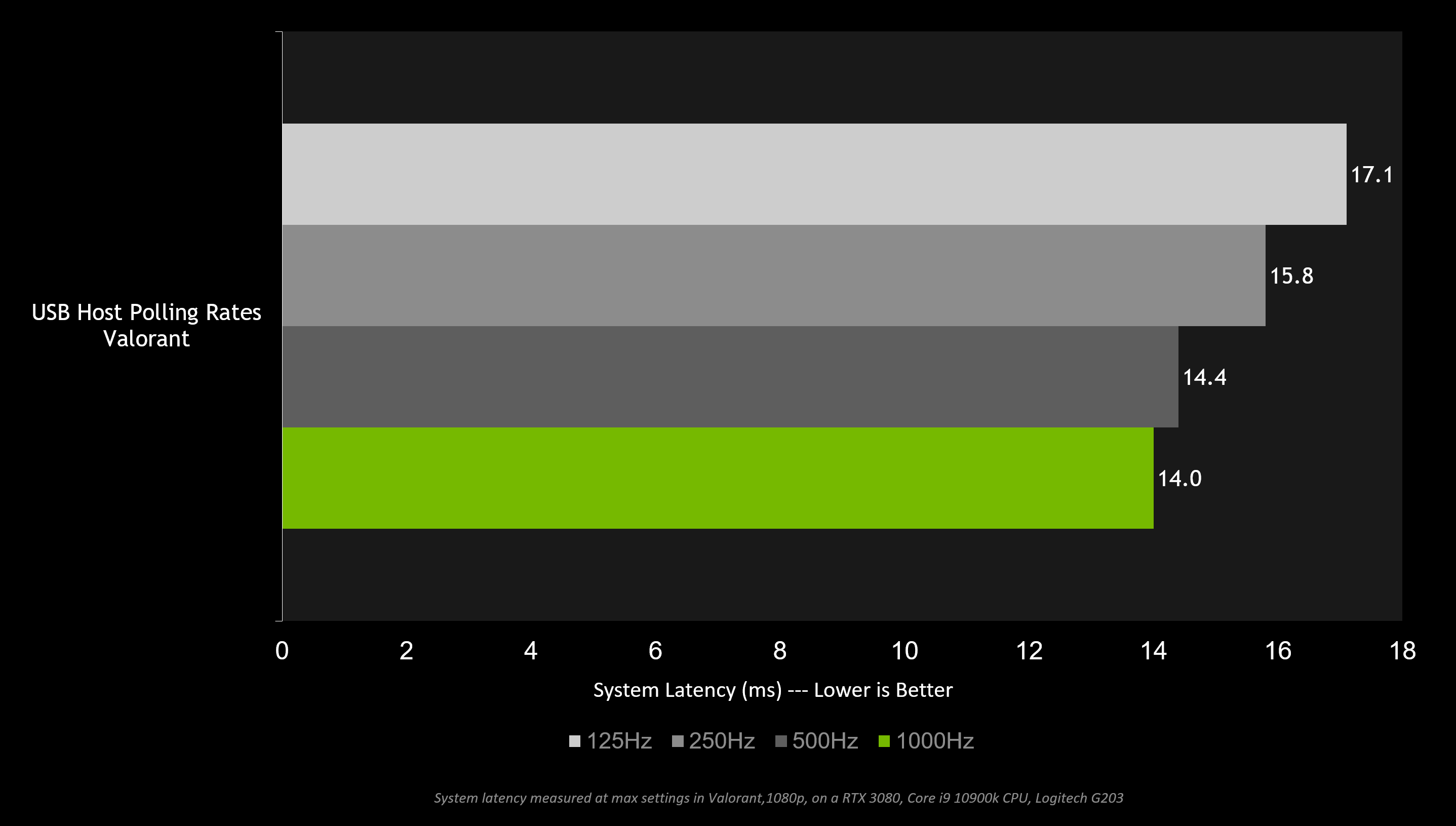



How To Reduce Lag A Guide To Better System Latency Geforce News Nvidia




How To Enable Nvidia Low Latency Mode Mobygeek Com
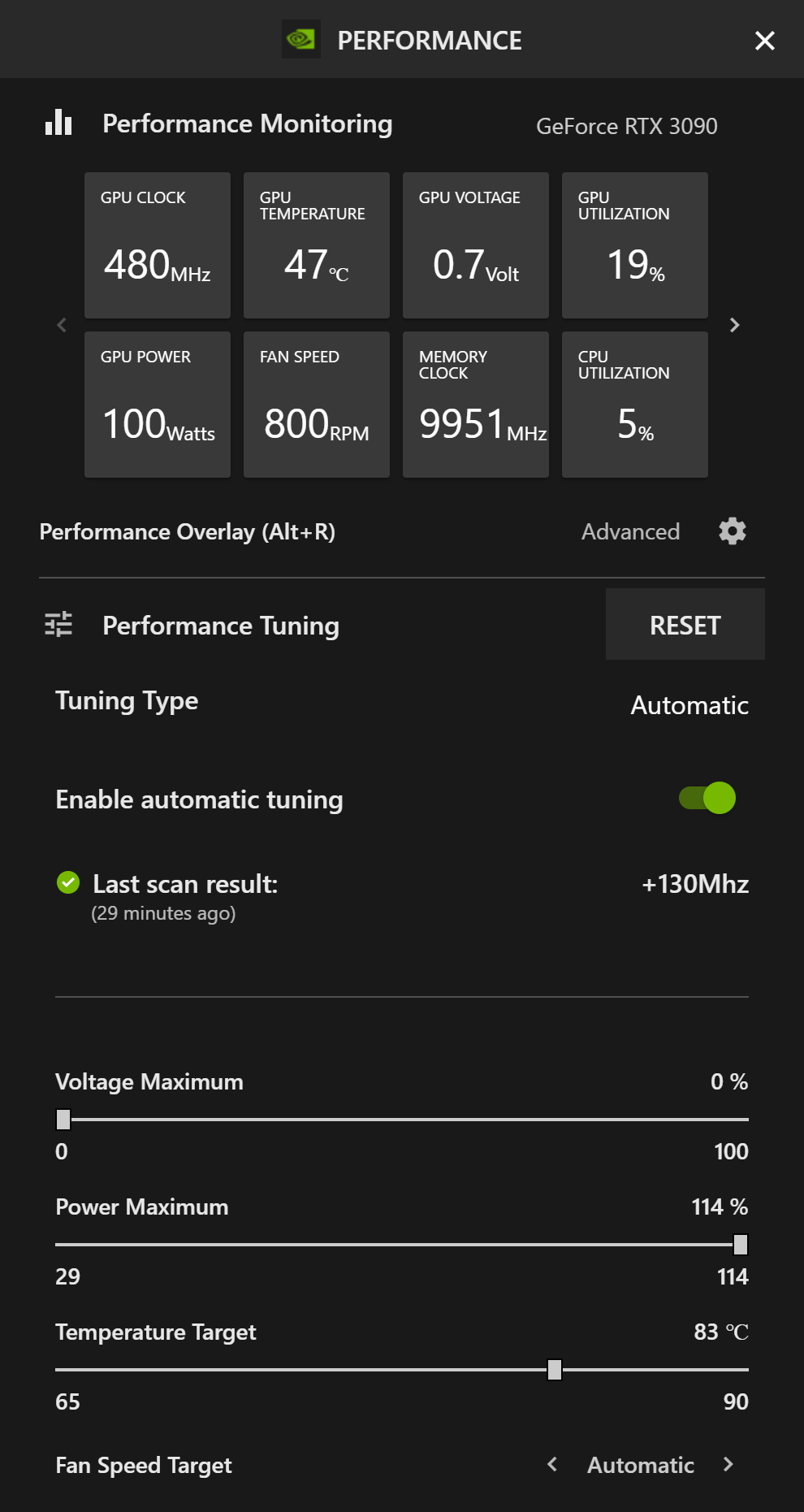



How To Reduce Lag A Guide To Better System Latency Geforce News Nvidia
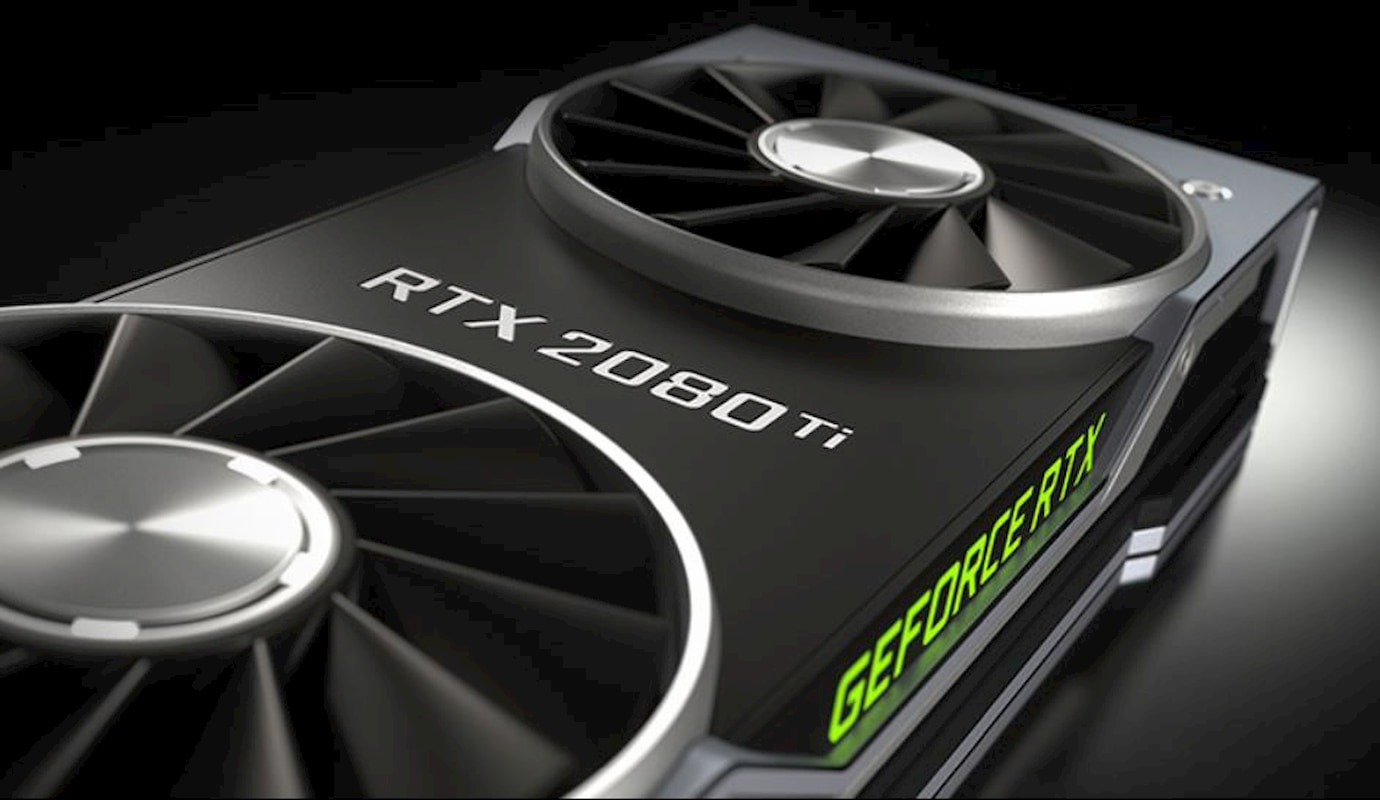



Nvidia Geforce Gamescom Driver Boosts Performance Adds Low Latency Mode Slashgear




Everything You Need To Know About Nvidia S Ultra Low Latency Ezpc Building



Nvidia




Nvidia Reflex Tested Low Latency Revolution Techspot




How To Reduce Lag A Guide To Better System Latency Geforce News Nvidia



How To Setup Nvidia Null For G Sync Monitors Correctly Tech Arp
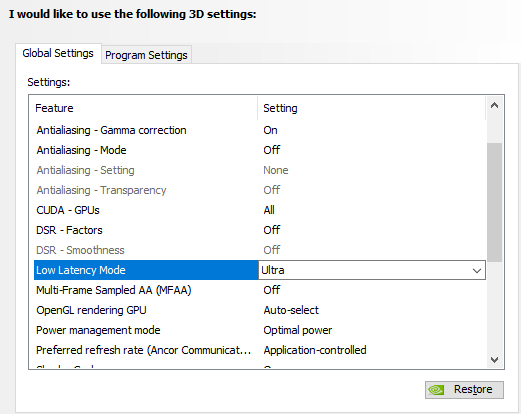



Tb Hydra Everyone Needs To Go Update Their Nvidia Driver And Enable This Setting Low Latency Mode Will Help You A Lot No Cayup T Co 8zxtei9wzh Twitter




Nvidia Geforce 436 02 Whql Graphics Drivers Released Gpu Integer Scaling Ultra Low Latency New Opengl Extensions And Vulkan 1 1 109 Geeks3d
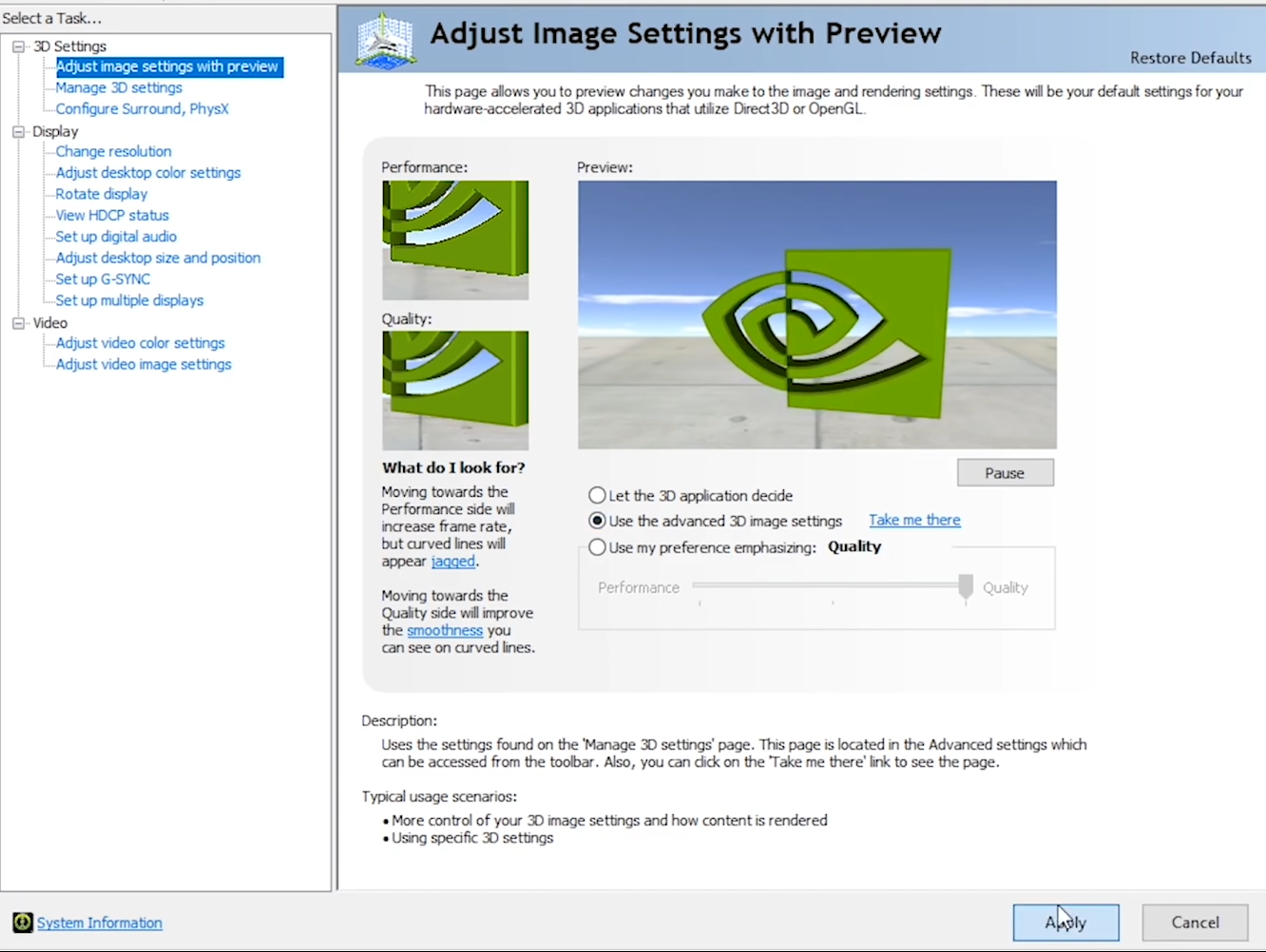



Best Valorant Settings For High Fps And Ultimate Performance




How To Setup Nvidia Null For G Sync Monitors Correctly Tech Arp



Full Guide Of How To Get The Lowest Input Lag Ms And Extra Help Forum Osu
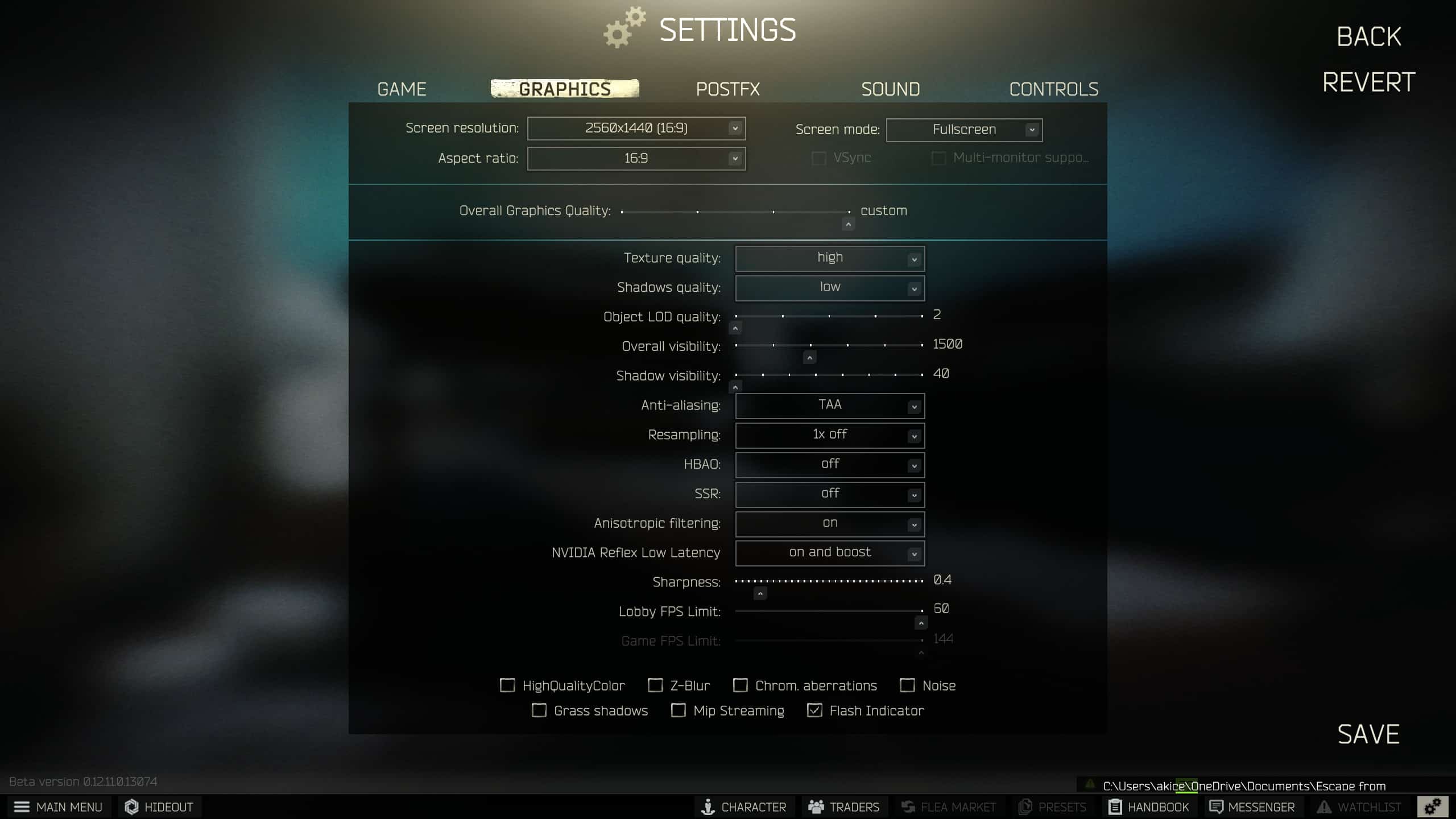



Escape From Tarkov S New Patch Finally Adds Nvidia Reflex




Max Frame Rate Cap Frame Rates Save Power And More Nvidia




Nvidia Game Ready Update Brings Ultra Low Latency Mode Integer Scaling And More Techspot




Low Latency Mode Nvidia All Printer Drivers
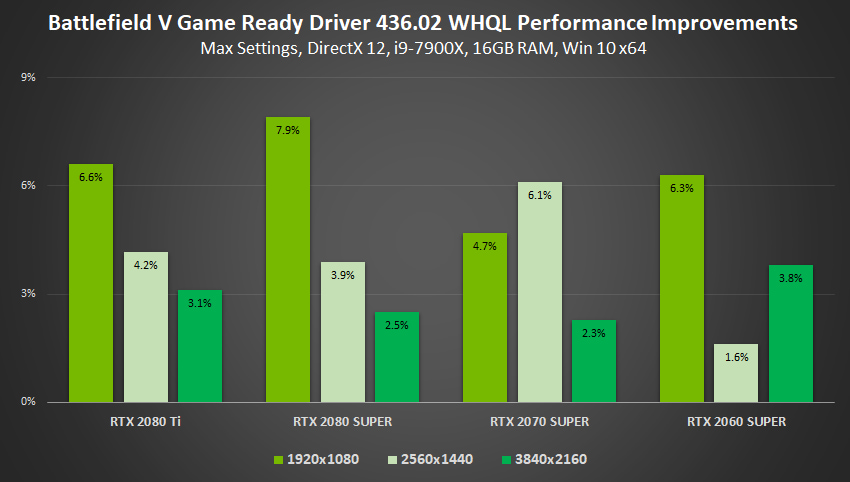



Nvidia Geforce Gamescom Driver Boosts Performance Adds Low Latency Mode Slashgear




Nvidia Gamescom Driver Adds Ultra Low Latency Mode Integer Scaling And More Eurogamer Net
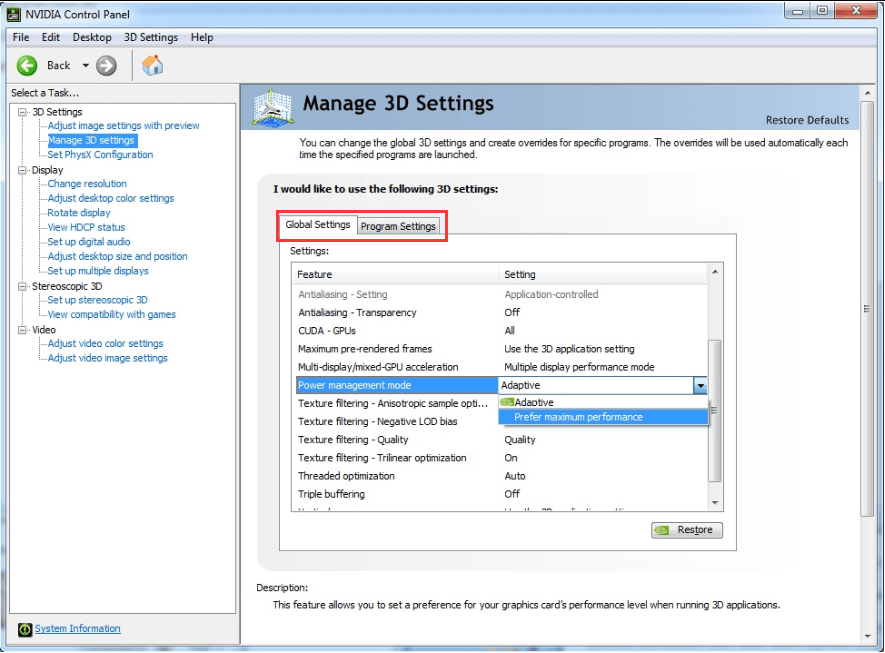



What Is Nvidia Low Latency Mode And How To Enable It




How To Enable Ultra Low Latency Mode For Nvidia Graphics
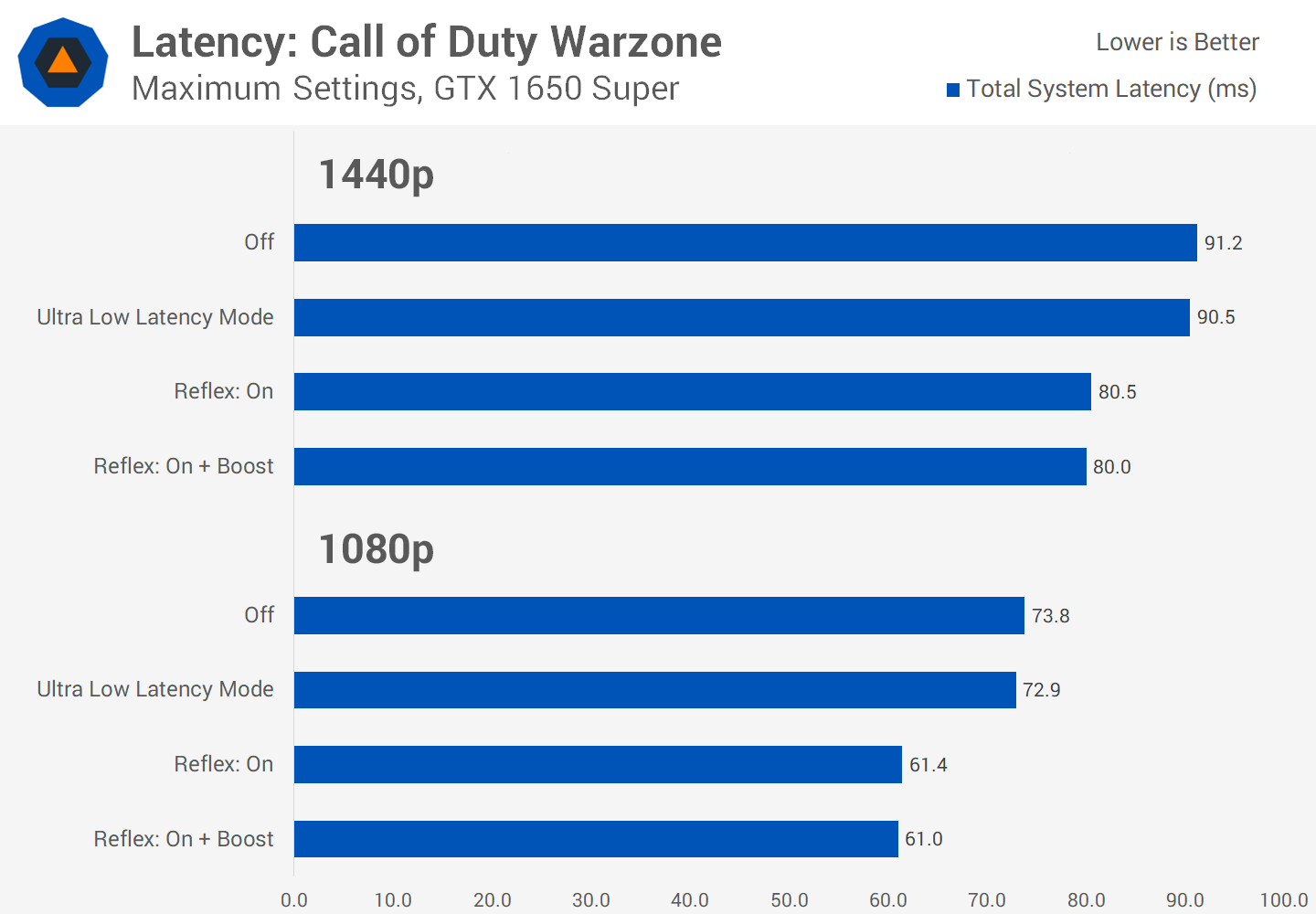



Nvidia Reflex Tested Low Latency Revolution Techspot
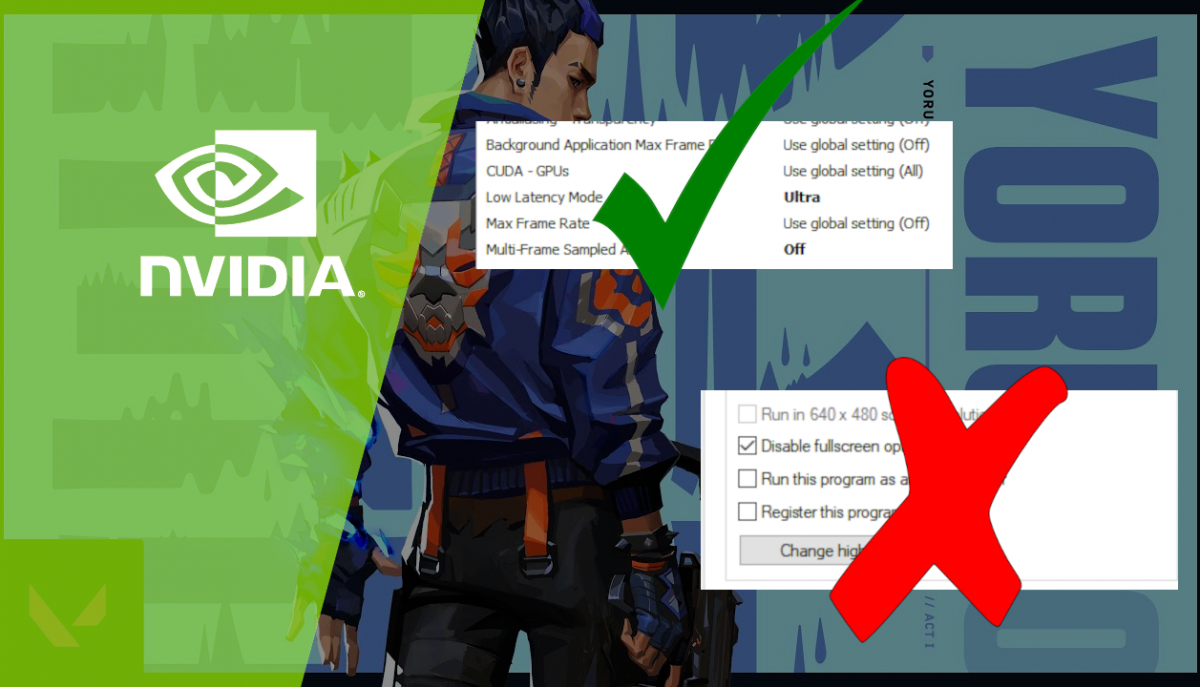



Best Valorant Settings 21 Increase Fps And Lower Input Lag Nvidia The Vr Soldier
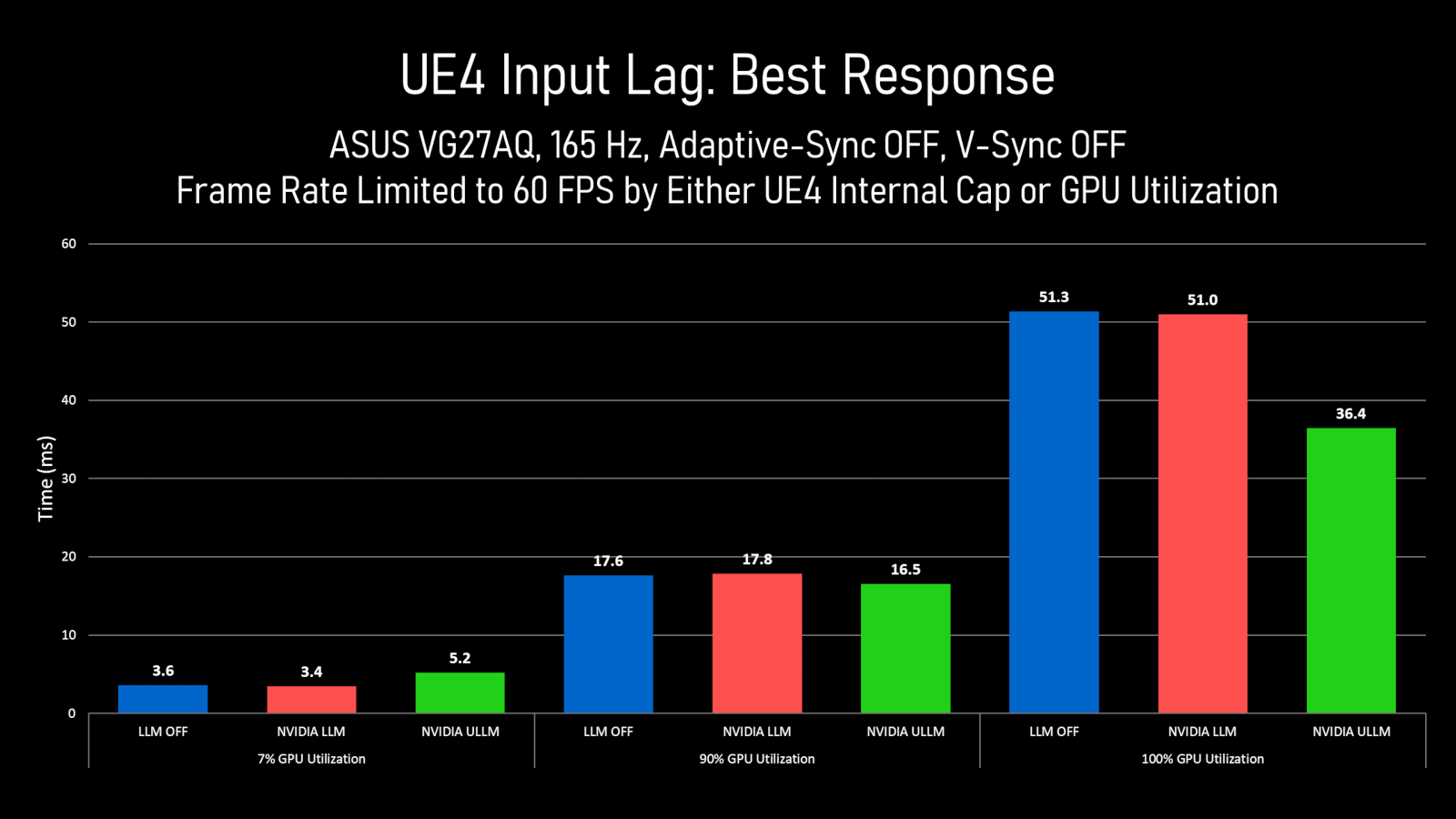



Ultra Setting In Low Latency Mode Question Blur Busters Forums
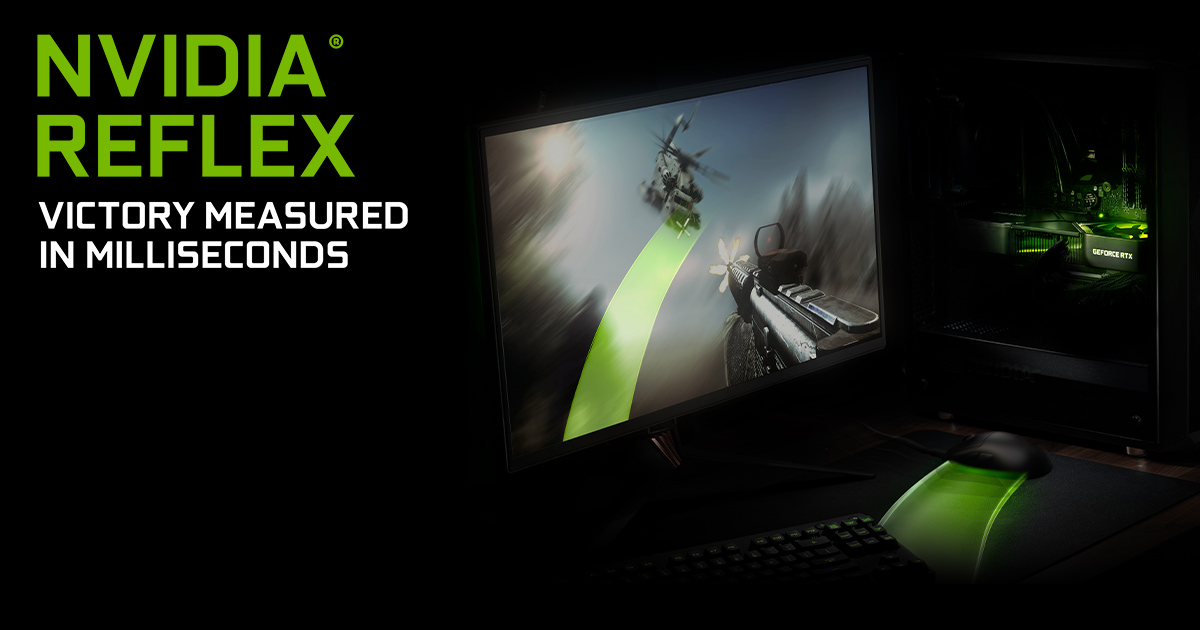



How To Reduce Lag A Guide To Better System Latency Geforce News Nvidia




How To Turn On Ultra Low Latency Mode For Nvidia Graphics Cards Youtube




Several Ways To Reduce Input Lag




How To Enable Ultra Low Latency Mode For Nvidia Graphics



1
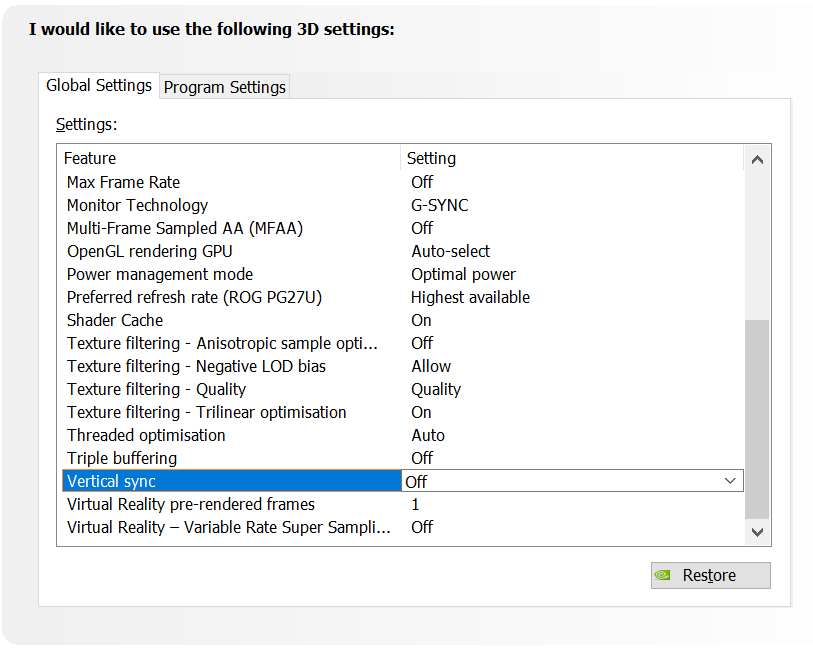



How To Reduce Lag A Guide To Better System Latency Geforce News Nvidia




Best Overwatch Nvidia Settings In 21 Optimize Nvidia For Overwatch
コメント
コメントを投稿